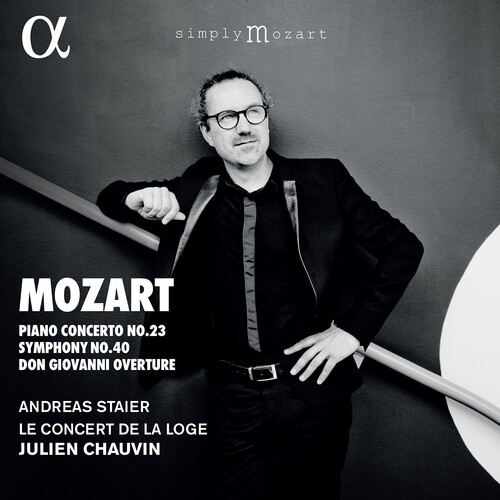Show results for
Deals
- 4K Ultra HD Sale
- Action Sale
- Alternative Rock Sale
- Anime sale
- Award Winners Sale
- Bear Family Sale
- Blu ray Sale
- Blues on Sale
- British Sale
- Classical Music Sale
- Comedy Music Sale
- Comedy Sale
- Country Sale
- Criterion Sale
- Electronic Music sale
- Fantasy Film and TV
- Folk Music Sale
- Hard Rock and Metal Sale
- Horror Sci fi Sale
- Jazz Sale
- Kids and Family Music sale
- Kids and Family Sale
- Metal Sale
- Music Video Sale
- Musicals on Sale
- Mystery Sale
- Naxos Label Sale
- Olive Films on Sale
- Page to Screen Sale
- Paramount Sale
- Pop and Power Pop
- Rap and Hip Hop Sale
- Reggae Sale
- Rock and Pop Sale
- Rock Legends
- Soul Music Sale
- TV Sale
- TV Sale
- Vinyl on Sale
- War Films and Westerns on Sale

Piano Concerto 23
- Format: CD
- Release Date: 9/23/2022

Piano Concerto 23
- Format: CD
- Release Date: 9/23/2022
- Composers: Wolfgang Amadeus Mozart
- Label: Alpha
- UPC: 3760014198755
- Item #: 2509944X
- Genre: Classical
- Release Date: 9/23/2022

Product Notes
Julien Chauvin meets up with one of the great harpsichordists and fortepianists of our time, Andreas Staier, who is a leading interpreter of the Mozart concertos. He presents us with his vision of the Piano Concerto no.23 and it's famous Adagio, 'one of the most heart-rending slow movements ever written by Mozart. Performers often tend to take it too slowly, certainly thinking that this will accentuate the tragic side, but Julien Chauvin and I spontaneously agreed on a slightly faster tempo, which respects the basic pulse of this movement in Siciliana rhythm. When you start with the right tempo, it's amazing how the whole discourse comes together perfectly, in a very logical and simple manner', says Staier, who plays a magnificent instrument by Christoph Kern after a 1790 fortepiano by Anton Walter, the great maker of Mozart's time. Also on the program is the Symphony no.40, in which, says Julien Chauvin, 'Mozart explores types of writing that he pushes to their most extreme limits. This is the case in the finale, where we find a succession of dissonant disjunct intervals at the opening of the development which, on closer inspection, present us with the full chromatic scale (except for G natural, the symphony's tonic). And so the twelve-note series was born!'

